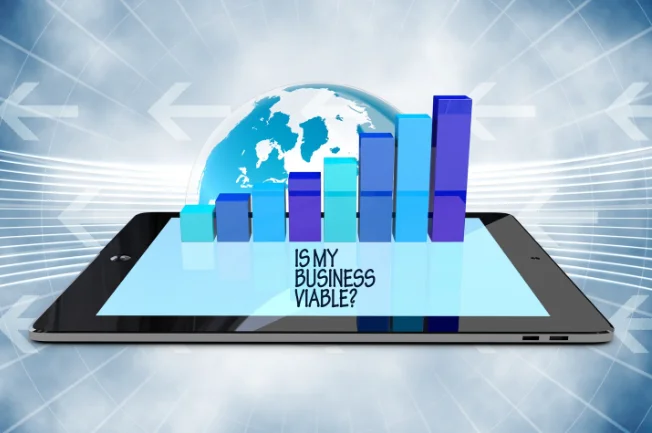How low-code platforms are transforming digital account opening in US Banks

A silent shift is transforming financial services. It’s not merely about the latest app interface or the promise of ‘instant everything’; it’s about how banks are reinventing the invisible infrastructure that supports their most critical customer processes. Among these, digital account opening serves as both a gatekeeper and a differentiator, as it informs users about the kind of experience they’re about to enter.
And yet, for many institutions, this first impression still fails. Not due to a lack of ambition, but because legacy systems resist the speed and agility modern users expect.
When slowness breaks trust before it begins
According to a 2023 J.D. Power study, 78% of U.S. customers abandon account applications when asked to upload documents or visit a branch in person. That’s not just friction—it’s a conversion crisis.
Meanwhile, the Federal Reserve reports that 40% of U.S. banks take more than five days to approve new checking accounts. In a mobile-first world, this delay erodes confidence before it’s even earned. Younger users, in particular, won’t wait—they’ll simply switch providers.
These delays aren’t just inefficiencies. They erode confidence at a time when attention spans are short and expectations are mobile-first. Younger users in particular won’t wait; they’ll switch.
The architecture behind seamless onboarding
Low-code platforms have emerged not as a shortcut, but as a redefinition of how onboarding can function. Identity verification, e-signatures, and document checks no longer require heavy custom development. Instead, modular toolkits offer drag-and-drop simplicity with enterprise-grade compliance.
Veritran’s low-code solution reduces onboarding times by up to 70%. The result isn’t just speed—it’s continuity. When banks deploy these tools, they’re not chasing trends; they’re closing gaps. One U.S. bank experienced a 35% increase in application completion rates after replacing its fragmented processes with unified, low-code workflows. It’s a shift from bureaucracy to choreography.
Designing for confidence instead of just speed
Fraud losses in the U.S. exceeded $12.5 billion in 2023, with identity theft accounting for nearly half of these cases. This means that one in two fraud incidents is due to identity theft, which is an alarming issue in today’s digital landscape. The instinct to add layers of verification is understandable, but complexity doesn’t equal security. It often does the opposite.
Veritran’s platform integrates behavioral biometrics—tracking how users type, swipe, and interact with their devices—to detect inconsistencies without interrupting flow. These subtle patterns flag anomalies early, reducing dependence on passwords and static checks. Aite-Novarica found that institutions using similar systems halve their identity fraud exposure.
And this doesn’t live outside of regulation. Encryption standards (AES-256), PCI DSS compliance, and secure data in transit and at rest are native to the platform, not retrofitted.
The regulation paradox and how low-code adapts
As regulation evolves, agility becomes compliance’s best ally. U.S. institutions must contend with frameworks like the BSA, USA PATRIOT Act, and a patchwork of state-specific mandates. Manually adjusting compliance workflows can slow down innovation and increase exposure.
Low-code architecture, with prebuilt templates for AML and KYC, turns that challenge into a design problem. Veritran’s solution offers real-time sanctions screening and customizable compliance modules. One regional bank reduced false positives in its AML system by 30%, reclaiming over 200 hours per year in manual oversight.
The lesson: regulation doesn’t need to be an obstacle if systems are designed to evolve with it.
UX that feels effortless—and that users remember
Intuition isn’t a luxury in UX—it’s a baseline. A 2023 McKinsey study found that 68% of U.S. banking users weigh intuitive design heavily when choosing a financial app. If navigation feels clunky or flows stall mid-process, they don’t file feedback—they leave.
This is where low-code excels. It’s not just about building interfaces faster, but testing and adapting them in near real time. A bank that reimagined its loan portal with Veritran’s tools cut drop-off rates dramatically. Applications were completed in under seven minutes. No external dev cycles. No vendor delays.
Omnichannel fluidity matters too. In Veritran-enabled flows, a user can begin an application on a smartphone and finish it on a laptop without losing a step. That kind of invisible consistency is often what defines satisfaction and retention.
Rewriting the math behind delivery cycles
Traditional development drains resources: silos, approvals, debugging. According to McKinsey, large-scale technology projects run approximately 45% over budget and deliver 56% less value than forecasted, while Boston Consulting Group reports that over 30% of banking technology initiatives face delays or budget overruns.
Low-code changes that. Veritran empowers compliance officers, analysts, and product teams to co-design flows in a shared environment. Prebuilt components for fraud detection, digital signatures, and audit trails eliminate redundancy.
Deployments have shown:
- 60% cost reductions
- Product launches shortened from quarters to weeks
- A credit union saving $850,000 annually by shifting from legacy tech to low-code
Intelligence that personalizes without intruding
AI can predict, suggest, and simplify—but only if it integrates without burdening the user. Low-code platforms make this possible, allowing machine learning models to personalize onboarding at the edge without full-scale system rebuilds.
Veritran’s AI-enabled tools focus on risk-based analysis, detecting behavioral anomalies and patterns that deviate from a user’s typical interaction. This supports real-time decision-making without interrupting the onboarding flow. In a context where identity theft and synthetic fraud are escalating, artificial intelligence becomes not just a convenience layer, but a security imperative. Applied with precision, it enables banks to act earlier, flag inconsistencies discreetly, and protect legitimate users without adding visible friction.
Here, intelligence isn’t just about optimization. It’s about dignity: making processes feel made-for-me instead of made-for-masses.
Digital account opening in the open banking era
Open banking is no longer speculative—it’s active. Section 1033 of the Dodd-Frank Act mandates secure data portability between banks and third-party apps. That’s not just a compliance challenge; it’s a UX opportunity.
Veritran’s open architecture enables secure APIs that connect with credit bureaus, fintechs, government portals, and even IRS data pipelines for income verification. These integrations reduce friction while preserving privacy, creating a trustworthy ecosystem around the user.
Interoperability now also includes blockchain networks and crypto wallets. By 2025, 75% of U.S. banks are expected to support crypto services (Juniper Research). Agile systems aren’t a luxury—they’re a prerequisite.

What Makes a Key West Spearfishing Company Stand Out From the Competition

A Comprehensive Guide to Performance Marketing Platforms and Tools

Data Automation Tools for Modern Businesses

Accelerating drug discovery through the DEL-ML-CS approach

AI in Marketing Is No Longer a Buzzword — It’s the Strategy

What Makes a Key West Spearfishing Company Stand Out From the Competition

A Comprehensive Guide to Performance Marketing Platforms and Tools

Data Automation Tools for Modern Businesses








